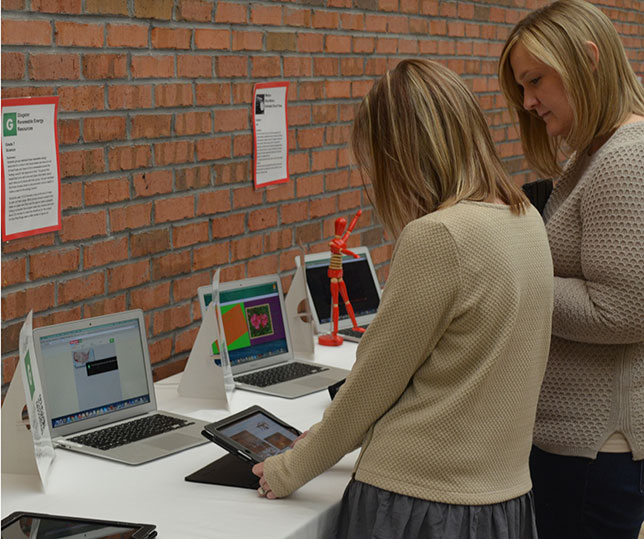A Digital Storytelling Playground
In 2012, Lee-Scott Academy launched its iConnect to Excellence technology initiative to great success. Two years later, LSA looked to demonstrate and emphasize its advancement in technology integration by launching #iConnect2.0 — a technology refresher and much more.
#iConnect2.0 focuses not only on ensuring that our devices, apps and infrastructure are up-to-date but also on analyzing how we are integrating this same technology into our instruction. LSA is aspiring to "teach above the line." This is in reference to the SAMR model developed by Dr. Ruben Puentedura, which provides a measuring stick for teachers to evaluate how they are incorporating technology into their instructional practices. Based on this model, LSA is striving to institute practices at the highest levels of technology use.
For example, one of the challenges of teaching full-time is that teachers spend a great deal of time trying to improve in their subject area and have limited time to research and experiment with new ideas for technology integration. To address this issue, last March, LSA provided a two-part introduction to Digital Storytelling. Digital Storytelling is a learning tool based on the concept that people naturally share information through stories. Evidence also demonstrates that people retain information better when it is presented in a story format. Modern technology tools allow teachers and students to easily incorporate the elements of storytelling and communicate their ideas through audio, video and text.
LSA Director of Instructional Technology Amy Conway and third-grade teacher Leigh Ann Parker introduced the concept, rationale and several examples of digital storytelling to our teachers during a late-start inservice day in March. Teachers were then invited to work in groups and brainstorm areas in which storytelling might be an effective instructional tool in their classrooms. Later that month, LSA provided an all-day "Digital Storytelling Playground" for teachers to experience and "play" with technology tools for their classrooms. More than 20 iPad and laptop stations, featuring a variety of apps, were available for teachers to explore in the atrium. One highlight of the playground was the green screen area that allowed teachers to discover ways to incorporate green screen technology in their classrooms.

Two LSA teachers participating in the Digital Storytelling Playground.
The results of this playground have been very exciting. After several months, teachers continued to find new ways to incorporate what they learned.
- Students in a fourth-grade social studies class used ChatterPix Kids to personalize the viewpoints of abolitionists and secessionists. Students wrote first-person scripts for the historical figures then used ChatterPix Kids to animate images of those characters speaking the words of the script. This project met a variety of learning styles and helped students better understand the opposing viewpoints.
- Students in a fifth-grade science class chose whether to use Doceri or Keynote to present the treatment plan for their "patient" during the hospital simulation conclusion of their body systems unit. Providing students with the opportunity to choose forced them to think critically about the relative merits of the various options.
- Students in an eighth-grade social studies class used Aurasma to share their "History of US" iMovies. Allowing students to create and then share their digital work provided them with a larger audience for their stories of family members' connections to historical events.
- Sixth-grade students used miniature green screens to recreate and retell scenes from literature circle novels.
- Seventh grade English students created an Adobe Voice project on a 1960s era group, event or person that was discussed in The Wednesday Wars by Gary D. Schmidt.
- Fourth grade students used Storyboard That to create comics illustrating a digital citizenship concept.
- Students in a sixth-grade social studies class used Kidblog to "blog through history." Writing first-person narratives helped them further develop their understanding of historical eras.
- Eighth-grade English students used Google Earth to trace the journeys of literary characters in novels and short stories, as well as famous people from nonfiction pieces. They maintain a digital portfolio of their writings on a Google site.
These are just some of the examples of the innovative ideas teachers have implemented. We look forward to highlighting the exciting ways our teachers are using digital storytelling and other best practices in technology through the #iConnect2.0 site at iconnect20.blogspot.com.
About the Author
Tonya Prewett is the Director of Development at Lee-Scott Academy in Auburn, AL. She can be reached at .